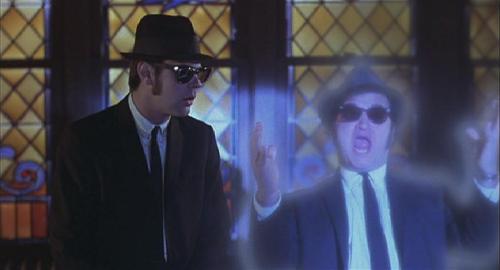In 3 decades of collecting stuff, I've shipped a crap load of electronic gear including huge home stereo receivers weighing up to 90 pounds, speakers with 18" woofers, etc. To date, not 1 item has ever been received damaged on the receiving end. Unfortunately, I can't say the same about the stuff I've received. Much of the damage was catastrophic
Over the years, I've learned a lot of about shipping, how things are handled, what conditions are more likely to result in damage, etc. In each case, when an item is damaged, I reviewed the shipping method and came to some conclusions. Some of this may coincide with your own experience, some might not. Some interesting ones that I noted in my brain are:
I once received a boombox, without the boombox. The carton was made of hard cardboard, not the corrugated ones meaning it looks more like a thick piece of paper or notebook backing sheet than the the type constructed with thinner pieces of cardboard and an "S" weaved pattern sandwiched between. These thick pieces of board were assembled with what appeared to be a wrapping paper type of exterior laminate. In any event, it appears the boombox (GE GF-9797 aka) acted like a battering ram and made a sneaky departure somewhere between NY and CA. So what I received was an empty box. The sad part of this is that a $2 roll of strapping tape would have prevented this entirely. Oh, it might have been damaged but at least it would not have been MIA. I was accused of running a scam, but the post office delivered it with a postal stamp with the words "received without contents." Due entirely to the stamp, the post office paid the claim pronto.
Another time, I received 2 boomboxes, in different times from an ex- Boomboxery member. He was adamant he packed them well but what happened was the carton used was soft -- too soft so it acted like a pillow. No doubt it felt "ok" when initially packed but both during shipping, the soft carton began to swell. The boxes both split along a corner and somewhere between the mideast and here, there is a hansel and gretal breadcrumb trail of foam popcorn peanuts leading to my doorstep. Of course once no longer full, the innards acted like a bowling ball battering ram and beat upon the cardboard box. Both boxes arrived with some amount of damage.
These are just 2 examples. There are many more. In almost all cases, I have learned that if crushed balled up newspaper was used, the item is most likely damaged. Anyhow, I have my own do's and do-not's I have learned to follow religiously. These are
1) do not use crushed newspaper or other crushed paper products. They might feel OK at first but after a week, the paper continues settling and flattening until they have no more cushioning effect. Worse yet, the void created by the sagging paper will mean the contents can move around. Again, think battering ram.
2) do no use soft cardboard boxes. Maybe they feel OK to you. But by the time they get to the destination, especially if the contents are heavy (think FH-7, RX-C300, etc), then it will be more like a pillow than a box. Nobody would consider mailing a boombox in a burlap bag or pillow case. But this is what it might amount to. Once, I received a boombox wrapped tight in a thick cardboard box. There was no padding whatsoever, but the boombox was tight inside the carton with no void. I feared the worse but the boombox sustained no damage. Again, a thick cardboard box is essential. I'm not suggesting to not use padding, I'm merely stating that a thick firm cardboard box is the foundation from which to build a bulletproof shipment. Each box has a round certificate stamped on the bottom that shows how strong it is. Upon filing a claim, this is the first piece of evidence that the shippers will use to invalidate your claim. Don't do everything right and use a substandard box. You will regret it immediately the first time you try to file a claim. Also if you recycle cartons and decide to ship out your 25 pound (without batteries) cinder block like RX-7700 and the box used to house potato chips -- all I can say is you may be in for a bumpy ride....
3) do not use soft foam for heavy items. I'm talking the kind of foam used in furniture padding, etc. You might think it would offer protection but in reality, while it helps to dampen vibration, does not offer enough rigidity to prevent the item (especially corner) to contact a hard surface when dropped. That is because the nature of the foam (compress-ability) does not help to spread load forces. Plastic cases tend to hold well when load is distributed evenly. But a single sharp blow will shatter it. In any event, I had a heavy tektronix oscilloscope mailed to me once with 2 inches of this foam wrapped around it like a pillow. However, the corner of the scope suffered damage because the box was dropped, the heavy scope probably behaved like an anvil corner being dropped onto a foam pillow = fail. If an item is heavy.... use STYROFOAM SHEETS. (more later).
4) DO use foam peanuts. Some folks frown on it's use. My experience is different. Properly packed, I've never had anything damaged when foam peanuts are used AND it was properly packaged. The operative word here is "properly" packaged. This means that there must be at least 2" of foam peanuts, that cardboard dividers be used where possible to prevent the goods from shifting and a thick cardboard box be use, that sufficient fill be added to prevent interior movement, and that box is sealed properly. Improperly used, foam peanuts will allow the contents to shift to a spot where the corner or side might be against the carton and if dropped....... Also, if the carton is not firm with strong corners, trouble awaits. Also, if the foam peanuts escape.... once again, think battering ram. One downside, especially with recycled foam peanuts is that small bits will work it's way inside the boombox or stereo if not sealed. This is a problem ONLY if you don't take the added step of wrapping the boombox. Again, good experience and bad experience is possible. Learn how to use foam peanuts well and its' possibly one of the best packing materials. Use it wrong and you'll blame it. But it's not the tool -- it's the operator. I find this one of the most versatile filler materials since it can conform and fill any void space. Just remember..... (a) fill to max to ensure there is no void, (b) use firm cardboard box (c) ensure no peanuts can escape (d) seal contents to prevent small debris infiltration, (e) try to use at least 2" all around. Follow these rules and you'll find very little chance of damage. Plus these steps adhere to UPS, Fedex and USPS guidelines for insurance damage coverage.
5) Shrink Wrap is your friend: Use it. You can buy 1,000 feet rolls for anywhere from $25 to $45 depending upon thickness. One roll will last you almost forever. Shrink wrap keeps everything tight and ensures that no knobs, straps, trim, battery covers, or anything flops around or gets lost during shipment. It keeps everything tight. Used around bubblewrap, you can use a minimum of tape allowing easy recycling of the bubble wrap. It is easy to unwrap. And one big reason to use it -- it is sticky and keeps the contents from shifting around and becoming a battering ram. If you don't believe me -- wrap a smooth heavy pen inside a cardboard tube and rap it hard against a table top. The pen will smack the tabletop like it was a rocket projectile. Then... wrap same pin in shrink wrap and try it again. You'll find that the pen does not move. This one benefit alone is sufficient to warrant adding it to your shipping arsenal. A boombox that does not kiss the box sides during impact is a boombox that survives. Kissing the box at the point of impact is the kiss of death for a boombox.
6) DO NOT use 2,000 feet of cellophane tape to "strap" your bubblewrap. First, it takes like forever to unwrap and what boombox collector is not anxious to see and play with their boombox. Secondly, it virtually guarantees that the bubblewrap gets torn to shreds and wasted forever. Third, cellophane tape makes the contents slippery (see #5 above regarding keeping contents from shifting). Fourth, contrary to popular belief, there is no miniature gremlin that slowly unwraps the boombox if you use only a few strategically well placed pieces of tape to secure the bubble wrap while it is inside the carton. A few pieces of tape is all you need. It's going nowhere when it's inside the carton. No, seriously. You don't need to wrap it like it's swimming to China.
7) DO USE large bubble, bubble wrap. While small-bubble bubble wrap works too, it takes like 50 layers to obtain the same level of protection as 2 or 3 layers of the big-bubble ones. Bubble wrapped boomboxes coupled with other cushioning materials (foam peanuts, styrofoam sheets) is an unbeatable combination. BTW, bubblewrap does not need to be wrapped around a boombox. A few sheets layered on the bottom of the carton (can you do 2"?), then centering the boombox, then the 4 edges can be filled by rolling the bubble wrap into "tubes". Once all 4-sides are bedded, several more layers of bubble wrap can be placed on the remaining top side before covering the flaps. I have shipped many boomboxes in this manner and they arrive every bit as safe as the bubble wrapped boombox with tape method. If you doubt this -- ask redbenjoe. I have shipped many boomboxes to him like this and 100% of the bubble wrap can be recycled.
8) DO use pull tabs on tape used to strap bubble wrap. You can create your own by folding over 1" of the tape on one end. This allows the unpacker an opportunity to just pull the tab and remove the tape. This only works if the tab is on the overlapping sheet of bubble wrap. If the tab is on the opposite direction, it does not work as well. Your recipient will thank you for this. It also saves the bubble wrap.
9) Do Resize the carton for maximum efficiency. Using cartons that are too small will cause obvious problems. However, using cartons that are too large is also not smart because it results in shipping inefficiency. All of the shipping companies now charge based on "dimensional" weight. That means even if a carton is lightweight, and large, it will be charged the same as if it was a large AND heavy carton. It is also wasteful since this large box not only results in extra shipping costs (sometimes exponentially more expensive), it also results in a much higher than normal filler material charge. Foam peanuts, bubble wrap, and styrofoam sheets are not cheap. However, finding the "perfect" size carton isn't always possible. Learn to develop your box-resizing skills and you can become a super boombox trader. To follow, I will show a box that I just resized to ship a very expensive grail.
10) DO use empty plastic bottles for filler if running low on shipping supplies. It works. And if the recipient is a recycler, he might thank you for the few extra dimes he'll get from the recovered redemption value. These empty soda or water bottles work great for adding to foam peanut mix when supplies are running low. If adding to foam peanuts, make sure to shake and jostle to settle everything.
11) DO use styrofoam panels. Forget all the opinions that styrofoam panels kills boomboxes. Not true at all. There is a theory that styrofoam panels are not soft enough to cushion GF-777's. In reality, those Chinese sellers did it wrong. First, the front of the case should have had some soft conforming cushion to prevent the switches, knobs and other protruding members from bearing all of the load. Secondly, styrofoam needs to be thick. 1/2" or 1" layers aren't adequate. Remember that UPS requires at least 2" of foam. But 2" styrofoam panels are not cheap hence they are rarely used. Also, a big problem is that the Chinese sellers use small pieces instead of a single monolithic piece. A thick panel provides good rigidity and spreads the load. Small bits offer no such protection. If a smaller heavier box was dropped onto the large face of the carton, a thick 1-piece panel spreads and distributes the load. Small pieces of foam assembled like a jigsaw puzzle does not offer this protection. Finally, styrofoam panels come in fixed dimensions. It is likely that the styrofoam, if used will still result in some void space. Styrofoam lined boxes with bubblewrapped boombox is the ultimate in protection.
12) For ultimate protection and when shipping extra heavy boomboxes or if the structural rigidity of the boombox is in question -- DO USE corner protectors. Large appliances are frequently shipped with cardboard, molded corner girders. They protect the carton corners from crush. If the carton holds up, and the boombox is not loose inside, there is a very good chance that all is well. If the corners are crushed.... well lets just hope that your boombox did not kiss that corner.
Home made box resize. As stated earlier, using a carton that is too large results in excess shipping charges and also results in a box that needs more filler material than necessary. Styrofoam panels, foam peanuts and bubblewrap is not cheap. But finding a perfect size carton is hard and next to impossible. Having the ability to make your own box means you take control of the situation. Here is how I do it.
(1) Select a strong sturdy carton.
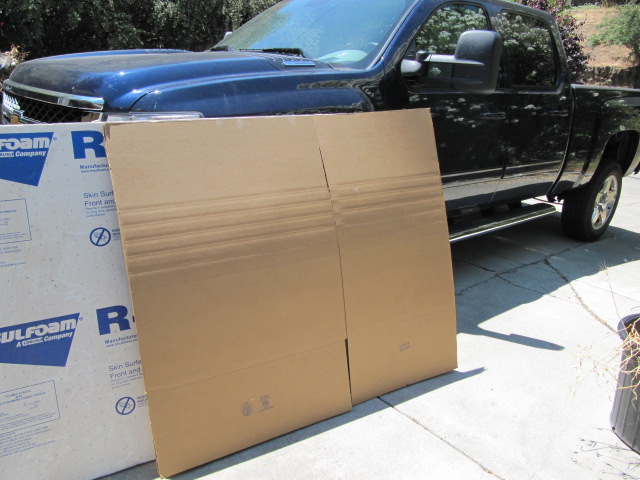
(2) Make sure the box certification is sufficient to ensure that it will withstand UPS scrutiny if a claim is ever necessary.

(3) There is usually a glued seam with a connecting tab. I separate the box at that seam and it will become 1 large, long, flat piece of cardboard.
(4) I then cut the opposite seam with a box cutter. You should end up with 2 identical 1/2's except one of the 1/2's will have a tab.

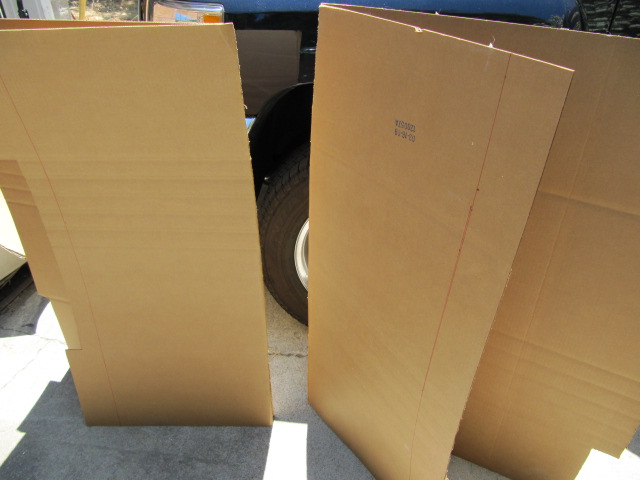
(5) Each 1/2 can be folded. The shorter side is the width. The longer side is the length. Resize these as necessary........ My box was 32x24. I wanted 32x20 so I cut 4" from the shorter sides/flaps but.......
(6) Except remember that each 1/2 will require fabrication of a new connecting tab. I leave 2" flap for that. Make each tab on each 1/2 on the same side... for example if you make the tab on the short side, make sure both new tabs are on the short side. If you mess this up, you will find when gluing that one side will have 2 tabs and the other will have none.
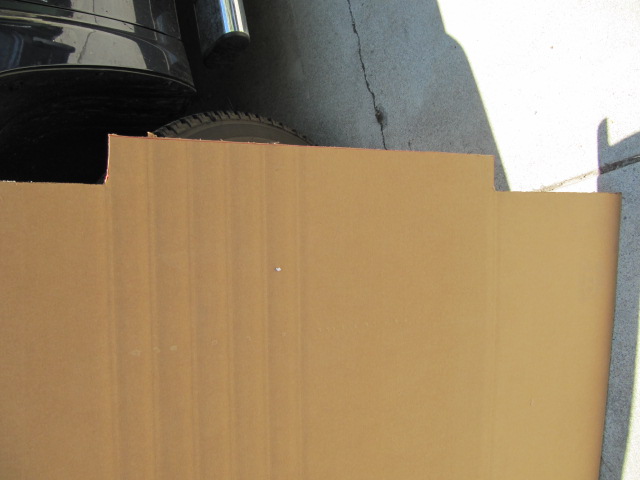
(7) Use a bakers knife or other suitable tool, push down hard to "indent" the marked location of the tab flap. This will allow it to crease and bend like it's supposed to. Do not simply bend the tab over a straightedge. The bend won't behave like the ones on professionally manufactured boxes. That crimp is necessary for it to bend right.
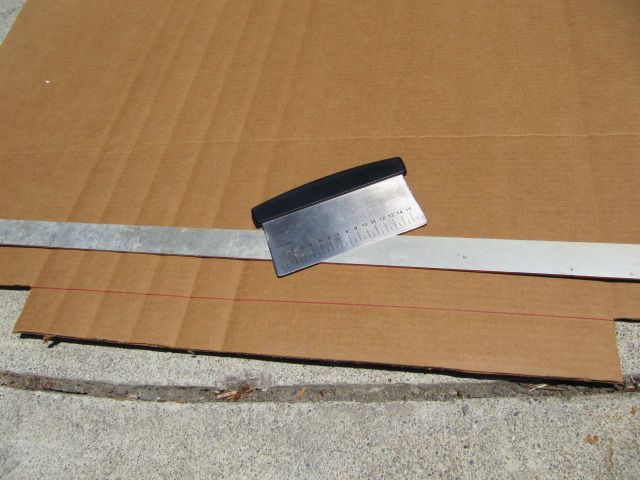
(8) Elmer's glue works but will delaminate upon exposure to moisture. I use a good quality carpenters glue which is waterproof when cured. The resulting glued edge is very STRONG.

(9) Fold over the tabs on both side, line up the 1/2's, apply glue with small paint brush, then clamp. I back up the cardboad with metal strips before clamping with spring clamps. If you do not back up where clamped, the edge will not glue evenly and the clamps will leave depressions which weakens the cardboard.

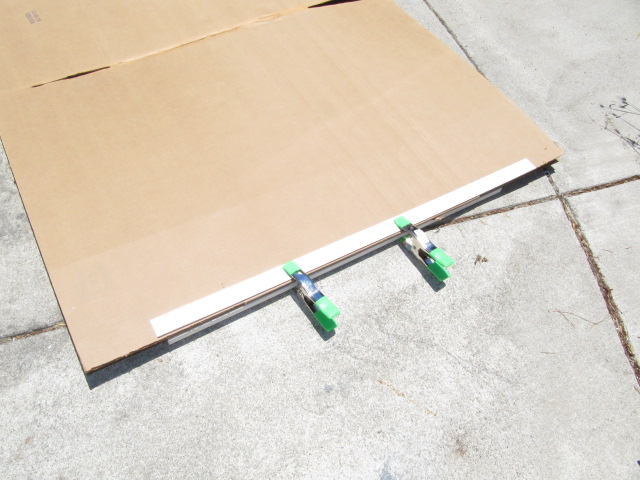
(10) Once the glue has cured for several hours, I assemble the bottom with paper strapping tape (the kind with water activated adhesive) and once dried, I follow up with 3M cellophane strapping tape. The flaps might overlap or you can cut them so they are perfect. I'm ok with the overlap because I think it's a little stronger.

(11) Thick cardboard foam panels are cut to fit and lined on bottom, sides and top.
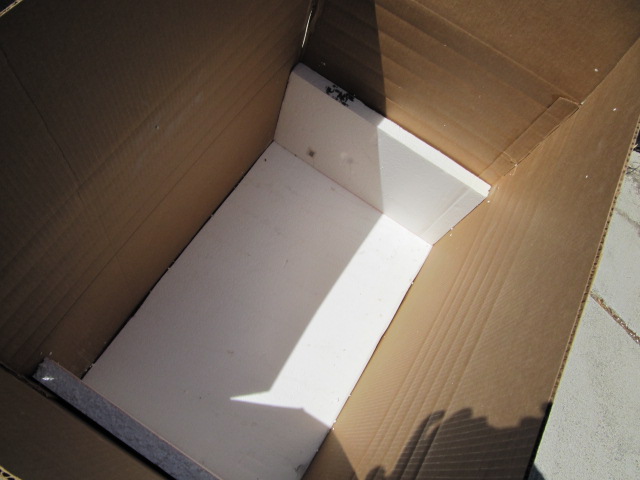
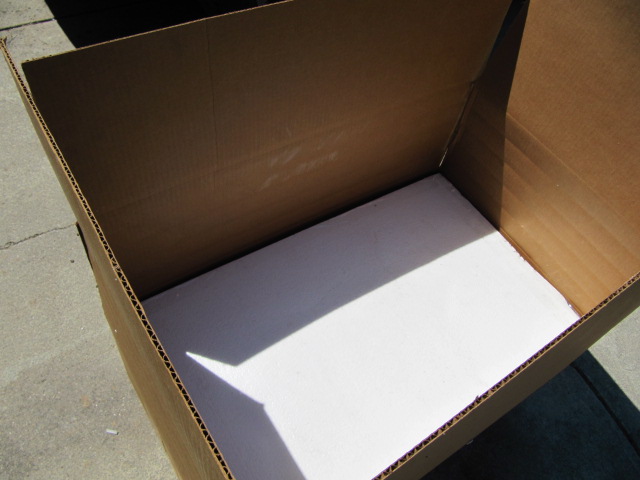
(12) The top flaps overlap a lot. In fact, it's almost like the top has double set of flaps. This is because this is a multi-depth box with pre-creased bendable flaps to accommodate a variety of heights. I only used the lowest height which is 15".
(13) This box is soo strong that it can be tossed 20 feet right now and all the corners will still stay true. A boombox shipped in this manner, clad in either bubble wrap or inner box, is almost bulletproof. I never had one single grail damaged when shipped like this.
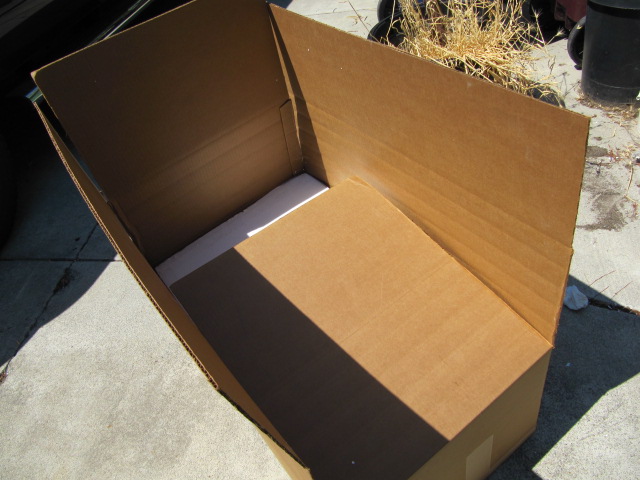
The completed box. Nobody can tell that it's been "modified". Also, due to the large flaps, this carton is extremely rigid, especially on edge.

Over the years, I've learned a lot of about shipping, how things are handled, what conditions are more likely to result in damage, etc. In each case, when an item is damaged, I reviewed the shipping method and came to some conclusions. Some of this may coincide with your own experience, some might not. Some interesting ones that I noted in my brain are:
I once received a boombox, without the boombox. The carton was made of hard cardboard, not the corrugated ones meaning it looks more like a thick piece of paper or notebook backing sheet than the the type constructed with thinner pieces of cardboard and an "S" weaved pattern sandwiched between. These thick pieces of board were assembled with what appeared to be a wrapping paper type of exterior laminate. In any event, it appears the boombox (GE GF-9797 aka) acted like a battering ram and made a sneaky departure somewhere between NY and CA. So what I received was an empty box. The sad part of this is that a $2 roll of strapping tape would have prevented this entirely. Oh, it might have been damaged but at least it would not have been MIA. I was accused of running a scam, but the post office delivered it with a postal stamp with the words "received without contents." Due entirely to the stamp, the post office paid the claim pronto.
Another time, I received 2 boomboxes, in different times from an ex- Boomboxery member. He was adamant he packed them well but what happened was the carton used was soft -- too soft so it acted like a pillow. No doubt it felt "ok" when initially packed but both during shipping, the soft carton began to swell. The boxes both split along a corner and somewhere between the mideast and here, there is a hansel and gretal breadcrumb trail of foam popcorn peanuts leading to my doorstep. Of course once no longer full, the innards acted like a bowling ball battering ram and beat upon the cardboard box. Both boxes arrived with some amount of damage.
These are just 2 examples. There are many more. In almost all cases, I have learned that if crushed balled up newspaper was used, the item is most likely damaged. Anyhow, I have my own do's and do-not's I have learned to follow religiously. These are
1) do not use crushed newspaper or other crushed paper products. They might feel OK at first but after a week, the paper continues settling and flattening until they have no more cushioning effect. Worse yet, the void created by the sagging paper will mean the contents can move around. Again, think battering ram.
2) do no use soft cardboard boxes. Maybe they feel OK to you. But by the time they get to the destination, especially if the contents are heavy (think FH-7, RX-C300, etc), then it will be more like a pillow than a box. Nobody would consider mailing a boombox in a burlap bag or pillow case. But this is what it might amount to. Once, I received a boombox wrapped tight in a thick cardboard box. There was no padding whatsoever, but the boombox was tight inside the carton with no void. I feared the worse but the boombox sustained no damage. Again, a thick cardboard box is essential. I'm not suggesting to not use padding, I'm merely stating that a thick firm cardboard box is the foundation from which to build a bulletproof shipment. Each box has a round certificate stamped on the bottom that shows how strong it is. Upon filing a claim, this is the first piece of evidence that the shippers will use to invalidate your claim. Don't do everything right and use a substandard box. You will regret it immediately the first time you try to file a claim. Also if you recycle cartons and decide to ship out your 25 pound (without batteries) cinder block like RX-7700 and the box used to house potato chips -- all I can say is you may be in for a bumpy ride....
3) do not use soft foam for heavy items. I'm talking the kind of foam used in furniture padding, etc. You might think it would offer protection but in reality, while it helps to dampen vibration, does not offer enough rigidity to prevent the item (especially corner) to contact a hard surface when dropped. That is because the nature of the foam (compress-ability) does not help to spread load forces. Plastic cases tend to hold well when load is distributed evenly. But a single sharp blow will shatter it. In any event, I had a heavy tektronix oscilloscope mailed to me once with 2 inches of this foam wrapped around it like a pillow. However, the corner of the scope suffered damage because the box was dropped, the heavy scope probably behaved like an anvil corner being dropped onto a foam pillow = fail. If an item is heavy.... use STYROFOAM SHEETS. (more later).
4) DO use foam peanuts. Some folks frown on it's use. My experience is different. Properly packed, I've never had anything damaged when foam peanuts are used AND it was properly packaged. The operative word here is "properly" packaged. This means that there must be at least 2" of foam peanuts, that cardboard dividers be used where possible to prevent the goods from shifting and a thick cardboard box be use, that sufficient fill be added to prevent interior movement, and that box is sealed properly. Improperly used, foam peanuts will allow the contents to shift to a spot where the corner or side might be against the carton and if dropped....... Also, if the carton is not firm with strong corners, trouble awaits. Also, if the foam peanuts escape.... once again, think battering ram. One downside, especially with recycled foam peanuts is that small bits will work it's way inside the boombox or stereo if not sealed. This is a problem ONLY if you don't take the added step of wrapping the boombox. Again, good experience and bad experience is possible. Learn how to use foam peanuts well and its' possibly one of the best packing materials. Use it wrong and you'll blame it. But it's not the tool -- it's the operator. I find this one of the most versatile filler materials since it can conform and fill any void space. Just remember..... (a) fill to max to ensure there is no void, (b) use firm cardboard box (c) ensure no peanuts can escape (d) seal contents to prevent small debris infiltration, (e) try to use at least 2" all around. Follow these rules and you'll find very little chance of damage. Plus these steps adhere to UPS, Fedex and USPS guidelines for insurance damage coverage.
5) Shrink Wrap is your friend: Use it. You can buy 1,000 feet rolls for anywhere from $25 to $45 depending upon thickness. One roll will last you almost forever. Shrink wrap keeps everything tight and ensures that no knobs, straps, trim, battery covers, or anything flops around or gets lost during shipment. It keeps everything tight. Used around bubblewrap, you can use a minimum of tape allowing easy recycling of the bubble wrap. It is easy to unwrap. And one big reason to use it -- it is sticky and keeps the contents from shifting around and becoming a battering ram. If you don't believe me -- wrap a smooth heavy pen inside a cardboard tube and rap it hard against a table top. The pen will smack the tabletop like it was a rocket projectile. Then... wrap same pin in shrink wrap and try it again. You'll find that the pen does not move. This one benefit alone is sufficient to warrant adding it to your shipping arsenal. A boombox that does not kiss the box sides during impact is a boombox that survives. Kissing the box at the point of impact is the kiss of death for a boombox.
6) DO NOT use 2,000 feet of cellophane tape to "strap" your bubblewrap. First, it takes like forever to unwrap and what boombox collector is not anxious to see and play with their boombox. Secondly, it virtually guarantees that the bubblewrap gets torn to shreds and wasted forever. Third, cellophane tape makes the contents slippery (see #5 above regarding keeping contents from shifting). Fourth, contrary to popular belief, there is no miniature gremlin that slowly unwraps the boombox if you use only a few strategically well placed pieces of tape to secure the bubble wrap while it is inside the carton. A few pieces of tape is all you need. It's going nowhere when it's inside the carton. No, seriously. You don't need to wrap it like it's swimming to China.
7) DO USE large bubble, bubble wrap. While small-bubble bubble wrap works too, it takes like 50 layers to obtain the same level of protection as 2 or 3 layers of the big-bubble ones. Bubble wrapped boomboxes coupled with other cushioning materials (foam peanuts, styrofoam sheets) is an unbeatable combination. BTW, bubblewrap does not need to be wrapped around a boombox. A few sheets layered on the bottom of the carton (can you do 2"?), then centering the boombox, then the 4 edges can be filled by rolling the bubble wrap into "tubes". Once all 4-sides are bedded, several more layers of bubble wrap can be placed on the remaining top side before covering the flaps. I have shipped many boomboxes in this manner and they arrive every bit as safe as the bubble wrapped boombox with tape method. If you doubt this -- ask redbenjoe. I have shipped many boomboxes to him like this and 100% of the bubble wrap can be recycled.
8) DO use pull tabs on tape used to strap bubble wrap. You can create your own by folding over 1" of the tape on one end. This allows the unpacker an opportunity to just pull the tab and remove the tape. This only works if the tab is on the overlapping sheet of bubble wrap. If the tab is on the opposite direction, it does not work as well. Your recipient will thank you for this. It also saves the bubble wrap.
9) Do Resize the carton for maximum efficiency. Using cartons that are too small will cause obvious problems. However, using cartons that are too large is also not smart because it results in shipping inefficiency. All of the shipping companies now charge based on "dimensional" weight. That means even if a carton is lightweight, and large, it will be charged the same as if it was a large AND heavy carton. It is also wasteful since this large box not only results in extra shipping costs (sometimes exponentially more expensive), it also results in a much higher than normal filler material charge. Foam peanuts, bubble wrap, and styrofoam sheets are not cheap. However, finding the "perfect" size carton isn't always possible. Learn to develop your box-resizing skills and you can become a super boombox trader. To follow, I will show a box that I just resized to ship a very expensive grail.
10) DO use empty plastic bottles for filler if running low on shipping supplies. It works. And if the recipient is a recycler, he might thank you for the few extra dimes he'll get from the recovered redemption value. These empty soda or water bottles work great for adding to foam peanut mix when supplies are running low. If adding to foam peanuts, make sure to shake and jostle to settle everything.
11) DO use styrofoam panels. Forget all the opinions that styrofoam panels kills boomboxes. Not true at all. There is a theory that styrofoam panels are not soft enough to cushion GF-777's. In reality, those Chinese sellers did it wrong. First, the front of the case should have had some soft conforming cushion to prevent the switches, knobs and other protruding members from bearing all of the load. Secondly, styrofoam needs to be thick. 1/2" or 1" layers aren't adequate. Remember that UPS requires at least 2" of foam. But 2" styrofoam panels are not cheap hence they are rarely used. Also, a big problem is that the Chinese sellers use small pieces instead of a single monolithic piece. A thick panel provides good rigidity and spreads the load. Small bits offer no such protection. If a smaller heavier box was dropped onto the large face of the carton, a thick 1-piece panel spreads and distributes the load. Small pieces of foam assembled like a jigsaw puzzle does not offer this protection. Finally, styrofoam panels come in fixed dimensions. It is likely that the styrofoam, if used will still result in some void space. Styrofoam lined boxes with bubblewrapped boombox is the ultimate in protection.
12) For ultimate protection and when shipping extra heavy boomboxes or if the structural rigidity of the boombox is in question -- DO USE corner protectors. Large appliances are frequently shipped with cardboard, molded corner girders. They protect the carton corners from crush. If the carton holds up, and the boombox is not loose inside, there is a very good chance that all is well. If the corners are crushed.... well lets just hope that your boombox did not kiss that corner.
Home made box resize. As stated earlier, using a carton that is too large results in excess shipping charges and also results in a box that needs more filler material than necessary. Styrofoam panels, foam peanuts and bubblewrap is not cheap. But finding a perfect size carton is hard and next to impossible. Having the ability to make your own box means you take control of the situation. Here is how I do it.
(1) Select a strong sturdy carton.

(2) Make sure the box certification is sufficient to ensure that it will withstand UPS scrutiny if a claim is ever necessary.

(3) There is usually a glued seam with a connecting tab. I separate the box at that seam and it will become 1 large, long, flat piece of cardboard.
(4) I then cut the opposite seam with a box cutter. You should end up with 2 identical 1/2's except one of the 1/2's will have a tab.


(5) Each 1/2 can be folded. The shorter side is the width. The longer side is the length. Resize these as necessary........ My box was 32x24. I wanted 32x20 so I cut 4" from the shorter sides/flaps but.......
(6) Except remember that each 1/2 will require fabrication of a new connecting tab. I leave 2" flap for that. Make each tab on each 1/2 on the same side... for example if you make the tab on the short side, make sure both new tabs are on the short side. If you mess this up, you will find when gluing that one side will have 2 tabs and the other will have none.

(7) Use a bakers knife or other suitable tool, push down hard to "indent" the marked location of the tab flap. This will allow it to crease and bend like it's supposed to. Do not simply bend the tab over a straightedge. The bend won't behave like the ones on professionally manufactured boxes. That crimp is necessary for it to bend right.

(8) Elmer's glue works but will delaminate upon exposure to moisture. I use a good quality carpenters glue which is waterproof when cured. The resulting glued edge is very STRONG.

(9) Fold over the tabs on both side, line up the 1/2's, apply glue with small paint brush, then clamp. I back up the cardboad with metal strips before clamping with spring clamps. If you do not back up where clamped, the edge will not glue evenly and the clamps will leave depressions which weakens the cardboard.


(10) Once the glue has cured for several hours, I assemble the bottom with paper strapping tape (the kind with water activated adhesive) and once dried, I follow up with 3M cellophane strapping tape. The flaps might overlap or you can cut them so they are perfect. I'm ok with the overlap because I think it's a little stronger.

(11) Thick cardboard foam panels are cut to fit and lined on bottom, sides and top.


(12) The top flaps overlap a lot. In fact, it's almost like the top has double set of flaps. This is because this is a multi-depth box with pre-creased bendable flaps to accommodate a variety of heights. I only used the lowest height which is 15".
(13) This box is soo strong that it can be tossed 20 feet right now and all the corners will still stay true. A boombox shipped in this manner, clad in either bubble wrap or inner box, is almost bulletproof. I never had one single grail damaged when shipped like this.

The completed box. Nobody can tell that it's been "modified". Also, due to the large flaps, this carton is extremely rigid, especially on edge.







